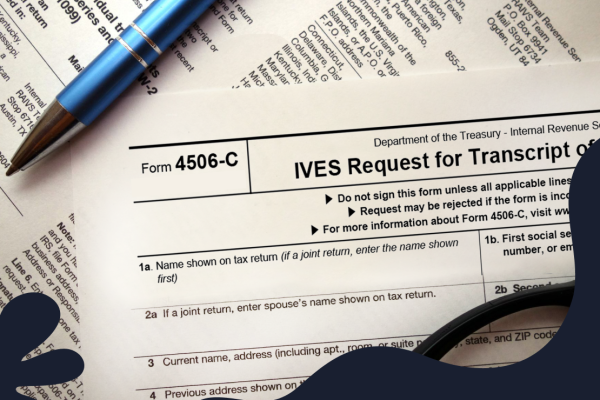Being a 1099-worker in the USA has its own perquisites. From financial freedom to being one’s own boss, self-employed persons have much to feel blessed about! However, the bleak side of running a business reveals itself in full glory during the tax season. Unlike W-2 workers whose salaries or wages are tax deductible, the rules for 1099 workers are different. Sole proprietors, freelancers, or business owners who earn above a certain threshold are mandated to pay taxes as they receive their income – a mechanism that we call quarterly estimated tax payments. Thus, one of the most common mistakes that business owners make while filing their tax returns is related to estimated taxes. In such a context, a quarterly tax payment calculator comes to the rescue.
A recent study reveals that 25 percent of freelancers skip paying their quarterly taxes, a misstep with several repercussions. First, self-employed persons cannot wait until April to file their taxes and pay them in one lump sum. As business owners, freelancers, and independent contractors do not have their taxes withheld from paychecks in a timely fashion, like regular salaried workers, they are mandated to pay estimated taxes, including earned income, rental income, capital gains, dividends, etc. There is a specific methodology to calculate estimated taxes, and if you want to know what it is, read ahead!
WHAT ARE QUARTERLY ESTIMATED TAX PAYMENTS?
We can understand estimated taxes as a mechanism facilitating the ‘pay-as-you-go’ process of income taxes for non-W2 taxpayers. Thus, estimated taxes can be defined as a tax arrangement wherein individuals pay taxes in proportion to the income generated from self-employed ventures. The taxes apply to 1099 workers who owe USD 1000 or more in a tax return. In addition, Internal Revenue Service requires the estimated taxes to be paid every quarter by those whose income is not subject to withholding, such as freelancers, LLCs, independent contractors, etc.
- The first quarter for payment is the three calendar months, from January 1 to March 31
- The second ‘quarter’ is two months long, from April 1 to May 31
- The third ‘quarter’ runs from June 1 to August 31
- The last and the fourth ‘quarter for payment of estimated taxes cover the final four months of a year
It is essential to remember that as a taxpayer, you have to file the usual paperwork for the year and pay the balance dues or request reimbursement for an overpayment. Furthermore, if your estimated tax payment does not equal at least 90 percent of the actual tax liability, the IRS assesses interests and penalties against the delinquent amount. Therefore, the timely and accurate calculation of estimated taxes is pivotal. Hence, taking the help of a quarterly tax payment calculator becomes all the more necessary.
So, without further ado, let us dive into the method of calculating estimated tax payments for the year 2022.
SPECIFIC INSTRUCTIONS FOR ESTIMATING 2022 TAXES ON A QUARTERLY BASIS
- Compute Your Total Taxable Income – The starting point for estimating your annual tax liability is to estimate your annual income. Thus, you have to calculate your total ‘estimated income.’ Gauging the total annual earnings is a relatively straightforward task for small business owners and entrepreneurs with a steady income flow. However, the problem arises when freelancers with unpredictable cash flow have to do the same. As most freelancers’ income fluctuates from quarter to quarter, the more innovative strategy is to tally the actual income at the end of each quarter and pay taxes on the exact amount instead. Nevertheless, as a 1099-worker, you should remember to claim any tax deductions to calculate your Adjusted Grodd Income. Without deductions, you will end up paying much more than required. Therefore, a quarterly tax payment calculator comes in handy to keep mistakes at bay.
- Takes Taxes into Consideration – After calculating your Adjusted Gross Income, the impending step is to ensure that you account for income and self-employment taxes. You can calculate your income tax by multiplying the AGI by your tax rate, using the income tax bracket in IRS publication 505. It is essential to remember that tax rates fluctuate yearly, so one should be careful to remain acquainted with the latest information. If you make USD 400 or more through self-employment, you are also mandated to pay self-employment taxes, which include 2.9 percent for Medicare and for Social Security it is 12.4 percent. When figuring out how much self-employment tax you owe, multiply your predicted total income (not your AGI) by 92.35 percent. Then, multiply the result by 15.3 percent to compute what you owe for self-employment.
- Total and Divide – After calculating your estimated income, you have to consider deductions and compute your income and self-employment taxes. Lastly, add everything together and divide it into four quarterly payments. In case you calculate the exact amount each quarter, you can skip the division.
You can file your estimated taxes using the accompanying IRS Form 1040 voucher or pay online through the official IRS website. However, if you pay online directly from a bank account, there is no fee. Nevertheless, payment with a credit card curtails a fee of either USD 2.50 or 2 percent of your payment.
After an overview of the calculation process of estimated taxes, let us take a tour of its other nitty-gritty.
IS IT IMPORTANT TO PAY ESTIMATED TAXES IN EQUAL AMOUNTS?
Needless to say, the simplest and most convenient way to pay quarterly estimated taxes is to pay in four equal amounts a year. However, there are scenarios where you may have to pay more in some quarters than others –
- You missed your first estimated payment until after April 15
- Your previous year’s overpayment is credited to your current year’s estimated tax payments
- You had earned more than you expected in one quarter
WHAT DO YOU MEAN BY THE SAFE HARBOR RULE FOR ESTIMATED TAX PAYMENTS?
Estimated tax payment is a massive hurdle, and all the computations and permutations are too much to handle for business owners. It is in such a situation that the Safe Harbor Rule emerges as the knight in shining armor. The Safe Harbor Method is a provision given by IRS that helps individuals avoid inaccuracy penalties. In addition, it provides a cushion for people who paid at least 90 percent of their tax bill for the previous year. To rephrase, if you made timely anticipated tax payments totaling 90% of your final amount, you won’t have to worry about any penalties.
For example, if your tax obligation last year was USD 6000, you must make USD 6000 worth of estimated payments this year. If you follow this golden rule, the IRS will not come after you, even if you end up owing more this year. Thus, under the Safe Harbor Rule, if you end up with a USD 6000 tax obligation this year, you can simply pay the extra USD 1000 when you file your taxes sans any penalty. Consequently, things are even easier if you overpay, owing to refunds.
Therefore, to ensure even the 90-percent-accuracy rule, a quarterly tax payment calculator is essential.
DUE DATES FOR QUARTERLY TAX PAYMENTS IN 2022
The 2022 deadlines for quarterly payment of estimated taxes are –
- January 1 to March 31, 2022: April 18, 2022
- April 1 – May 31, 2022: June 15, 2022
- June 1 – August 31, 2022: September 15, 2022
- September 1 – December 31, 2022: January 17, 2023
PENALTY FOR NOT PAYING QUARTERLY TAXES
The Internal Revenue Service takes quarterly tax payments very seriously. So, if you missed a deadline, make the payment as soon as possible. Do not wait for the next deadline to arrive, as you may incur fines when you file your returns at the end of the year. The fine depends on how much you underpaid and how late the estimated tax payments were.
The ‘pay-as-you-go’ mechanism that the IRS follows means that they are not content even if you pay your entire tax obligation at the end of the year as opposed to a quarterly payment. Even missing a deadline by some days can result in a penalty. So, make sure to avoid additional financial burdens through timely payments. (Alprazolam)
It is noteworthy to mention that the Internal Revenue Service extends filing and payment deadlines for victims of natural disasters like floods, hurricanes, and wildfires.
HOW CAN A QUARTERLY TAX PAYMENT CALCULATOR HELP SELF-EMPLOYED PERSONS
Estimated tax payments are a grueling process and as complex as anything can be. Spending hours on estimated tax calculations is not feasible for sole proprietors, LLCs, and freelancers. In addition, hiring a tax consultant can burn a hole in the pocket. Well, in such a scenario, a tool like the quarterly tax payment calculator of Flyfin comes in handy. It is an AI-driven instrument that can calculate your estimated taxes in five minutes. Accuracy, efficiency, and high speed are three salient features of the calculator.





